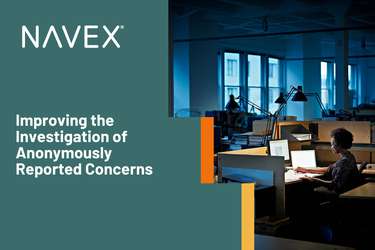The winds of social change, the threat of violence in the workplace, and shifting regulations governing workers and third parties are all weighing heavily on employers’ minds. That’s according to a survey of more than 800 in-house counsel, human resources professionals and C-suite executives released earlier this month by global labor law firm Littler.
Here are three key takeaways from Littler’s report:
1. LGBT Issues on Employers’ Minds
The biggest year-over-year change in Littler’s data stemmed from concerns about enforcement of discrimination claims by the U.S. Equal Employment Opportunity Commission—particularly those related to LGBT workers. Seventy-four percent of respondents said they expected such discrimination claims to increase in the next 12 months, compared with just 31 percent in the previous year’s survey. Respondents also expected a rise in claims by LGBT workers for equal pay, up to 61 percent in 2016, a sizable increase from 34 percent in 2015.
The emphasis on LGBT concerns isn’t particularly surprising, given heightened media attention and public awareness of the issue—notably surrounding so-called “bathroom bills” in some states—plus recent actions and statements from the EEOC. In fact, employers predicting increased LGBT claims might actually be a good thing, if it’s a sign that those workers feel empowered to come forward and participate in speak-up cultures, which are vital to heading off and rooting out discrimination and other problematic behavior.
2. Workplace Violence a Big Concern
Littler’s survey was conducted in April and May—in the midst of a wave of violence in the US and abroad. Most survey respondents said their organizations were doing something to address the possibility of violence in the workplace; only 12 percent said they had taken no action.
More than half (52 percent) of respondents said they updated or implemented a “zero tolerance” workplace violence policy and 38 percent held employee training sessions on how to recognize and respond to a potentially violent situation.
Given the persistence of violent acts, it’s possible that organizations will act more aggressively to the threat of workplace incidents in the next 12 months than they did in the previous 12. Certainly, more organizations need to adopt zero-tolerance policies and provide employee training. According to the Littler survey, just 38 percent had trained employees on how to recognize and respond to a potentially violent situation and only 28 percent had conducted “active shooter” response training.
3. Employers Struggle with the Expanded Definition of “Joint Employer”
Survey respondents expressed clear concern with the National Labor Relations Board’s decision, in late 2015, to alter how it determines whether two or more entities are joint employers of a single workforce. Seventy percent said they expected a rise in claims against companies due to the actions of subcontractors, staffing agencies or franchisees in the next 12 months.
According to our research, their concern is warranted. In NAVEX Global’s 2016 Third Party Risk Management Benchmark Report, 32 percent of respondents said they didn’t evaluate third parties before engaging with them—despite several high-profile compliance failures in recent years that originated with third parties.
Littler’s report shows why it’s more important than ever for organizations to vet and continuously monitor subcontractors, staffing agencies and any third parties with whom they engage. Tools that unearth third-party red flags—public scandals, shady ownership or debarment from government work—are critically important for employers to use in evaluating any third-party partnership or working arrangement.
Conclusion
Strong management systems that check out third parties before and after work begins will also help ensure that they abide by contracts, send detailed receipts and generally comply with the law. It’s important for organizations to know that when they sign up a third party, they co-own the risk.
All of the findings in the report are a good reminder of how outside events can affect organizational thinking. Regular compliance program assessments, strong compliance training, policy management, and a commitment to a healthy, speak-up culture are all foundational as compliance professionals address the rapidly-changing environmental risks their organizations face.
Working to address one or more of these issues? Connect with a NAVEX Global solutions expert to get ideas and insights on how to address your organization’s biggest challenges.








